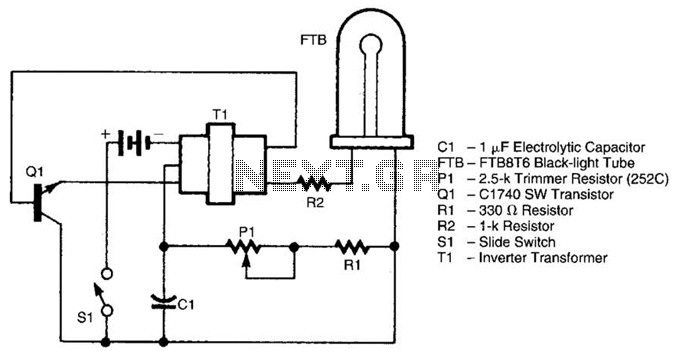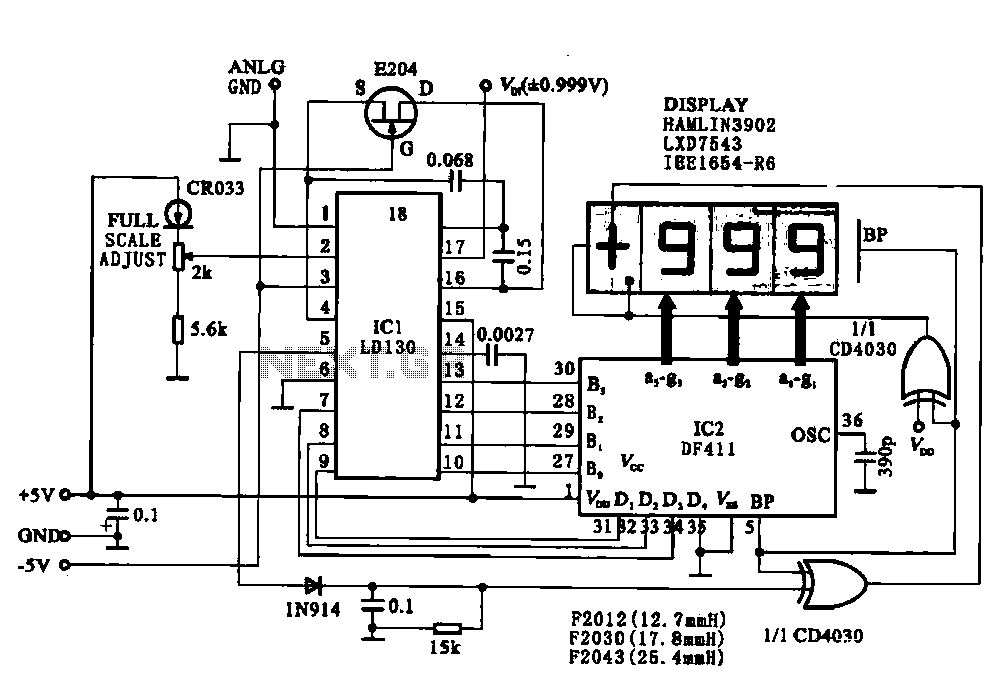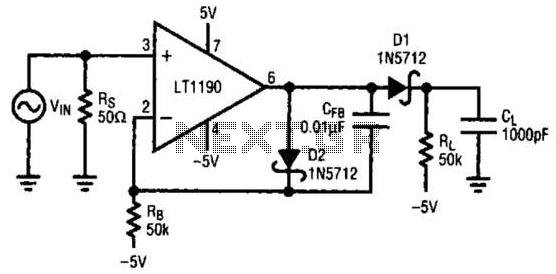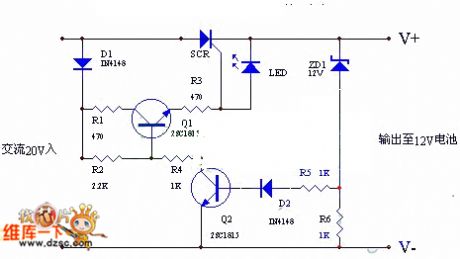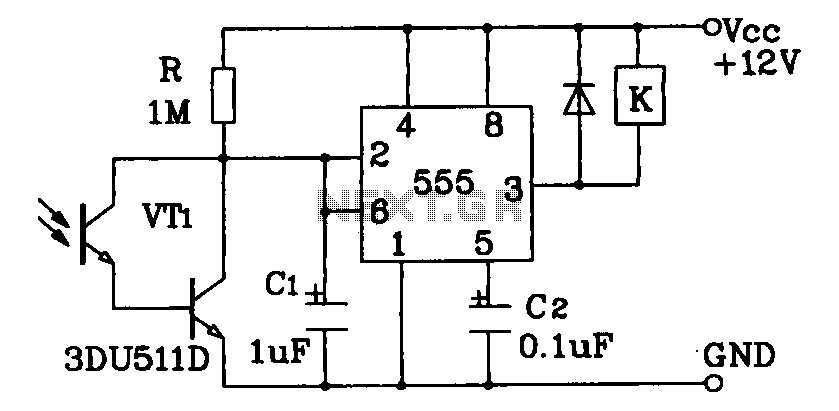
um3561 high temperature detector circuit diagram
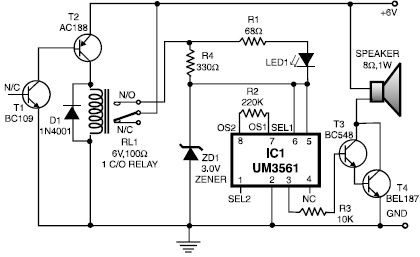
This heat detector alarm electronic project is designed using the UM3561 sound generator circuit and several common electronic components. The heat detector circuit employs a complementary pair of npn and pnp transistors to sense heat. When the temperature near the T1 transistor increases, the resistance between the emitter and collector decreases, allowing it to conduct. Simultaneously, the T2 transistor also conducts, as its base is connected to the collector of the T1 transistor. This activates the RL1 relay, which powers the siren to produce a fire engine alarm sound. The electronic project requires a 6 volts DC power supply, while the UM3561 IC is powered by a 3-volt zener diode, as the alarm sound necessitates a 3 volts DC power supply.
The heat detector alarm circuit integrates several key components to ensure effective operation. The UM3561 sound generator IC is pivotal for generating alarm sounds, simulating a fire engine siren when triggered. The circuit architecture begins with the temperature sensing mechanism, where the T1 transistor acts as the primary heat sensor. This transistor is configured in a way that its conduction state is influenced by the ambient temperature. As the temperature rises, the T1 transistor's collector-emitter resistance drops, leading to increased current flow.
The T2 transistor serves as a secondary amplifier and relay driver. Its base is connected to the collector of the T1 transistor, creating a feedback loop that enhances the sensitivity of the heat detection process. When T1 conducts due to elevated temperatures, T2 also turns on, energizing the RL1 relay. The relay acts as a switch that controls the power to the siren, allowing it to produce an audible alarm.
Powering the circuit requires a stable 6 volts DC supply, which can be achieved using a standard battery or a regulated power adapter. The UM3561 IC, however, operates at a lower voltage, necessitating the inclusion of a 3-volt zener diode in the circuit. This zener diode regulates the voltage supplied to the UM3561, ensuring that it receives the correct amount of power to function effectively without risk of damage.
Overall, the design of this heat detector alarm circuit emphasizes simplicity and reliability, making it suitable for various applications in fire safety systems. The use of common electronic components facilitates easy assembly and troubleshooting, while the incorporation of transistors and a relay allows for efficient heat detection and alarm activation.This heat detector alarm electronic project is designed using the UM3561 sound generator circuit and some other common electronic parts. This heat detector circuit project uses a complementary pair comprising npn and pnp transistor to detect heat.
When the temperature close to the T1 transistor is hot, the resistance to the emitter collector goes low and it starts conducting. In same time T2 transistor conducts, because its base is connected to the collector of T1 transistor and the RL1 relay energized and switches on the siren which produce a fire engine alarm sound. This electronic project must be powered from a 6 volts DC, but the UM3561 IC is powered using a 3 volt zener diode, because the alarm sound require a 3 volts dc power supply.
🔗 External reference
The heat detector alarm circuit integrates several key components to ensure effective operation. The UM3561 sound generator IC is pivotal for generating alarm sounds, simulating a fire engine siren when triggered. The circuit architecture begins with the temperature sensing mechanism, where the T1 transistor acts as the primary heat sensor. This transistor is configured in a way that its conduction state is influenced by the ambient temperature. As the temperature rises, the T1 transistor's collector-emitter resistance drops, leading to increased current flow.
The T2 transistor serves as a secondary amplifier and relay driver. Its base is connected to the collector of the T1 transistor, creating a feedback loop that enhances the sensitivity of the heat detection process. When T1 conducts due to elevated temperatures, T2 also turns on, energizing the RL1 relay. The relay acts as a switch that controls the power to the siren, allowing it to produce an audible alarm.
Powering the circuit requires a stable 6 volts DC supply, which can be achieved using a standard battery or a regulated power adapter. The UM3561 IC, however, operates at a lower voltage, necessitating the inclusion of a 3-volt zener diode in the circuit. This zener diode regulates the voltage supplied to the UM3561, ensuring that it receives the correct amount of power to function effectively without risk of damage.
Overall, the design of this heat detector alarm circuit emphasizes simplicity and reliability, making it suitable for various applications in fire safety systems. The use of common electronic components facilitates easy assembly and troubleshooting, while the incorporation of transistors and a relay allows for efficient heat detection and alarm activation.This heat detector alarm electronic project is designed using the UM3561 sound generator circuit and some other common electronic parts. This heat detector circuit project uses a complementary pair comprising npn and pnp transistor to detect heat.
When the temperature close to the T1 transistor is hot, the resistance to the emitter collector goes low and it starts conducting. In same time T2 transistor conducts, because its base is connected to the collector of T1 transistor and the RL1 relay energized and switches on the siren which produce a fire engine alarm sound. This electronic project must be powered from a 6 volts DC, but the UM3561 IC is powered using a 3 volt zener diode, because the alarm sound require a 3 volts dc power supply.
🔗 External reference
